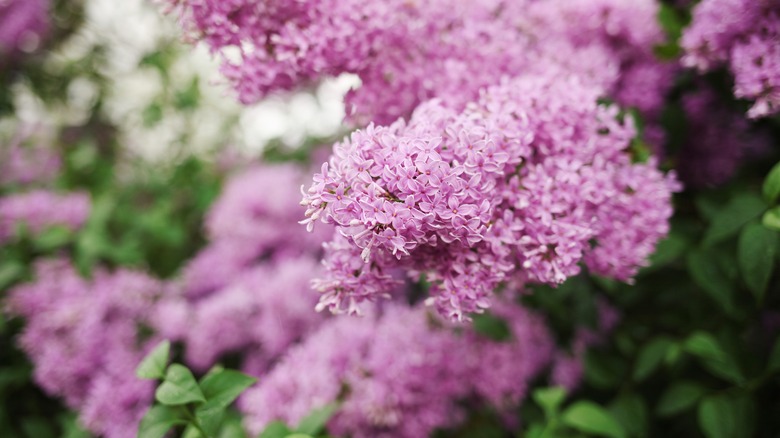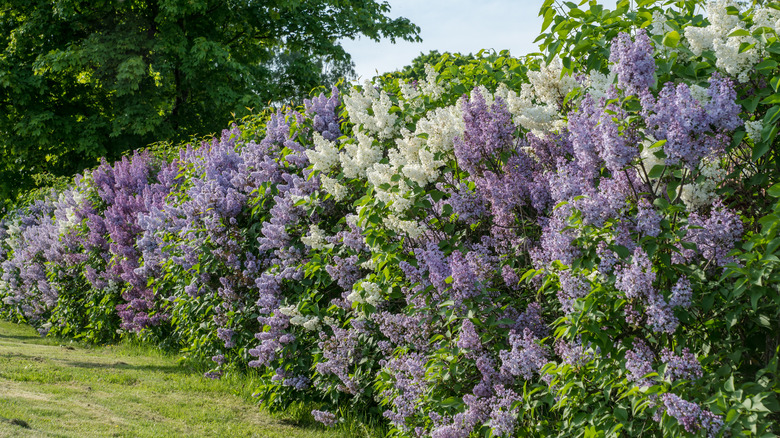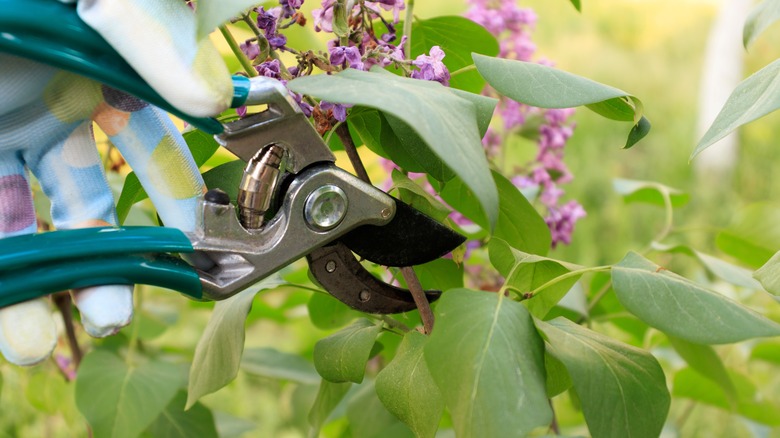The Best Time To Prune Your Lilacs To Ensure Your Fragrant Plant Stays Healthy
Lilac bushes (Syringa vulgaris) produce beautiful bunches of tiny flowers that bloom once a year. To many, lilacs are the perfect flower for a garden because they're fragrant and resilient, and there's a wide variety to choose from. Once you plant them in a location where they can be enjoyed and admired, they may continue to grow there for over a century. Plus, their flowers are excellent for attracting butterflies to your yard.
To give your lilac bush a great life, find a spot with well-draining soil and a pH of around 7.0. Then make sure there's full sun, which is generally defined as six or more hours of light per day. As a hardy outdoor plant, you won't have to water it often. You'll only need to use the hose if you get less than an inch of rain in a week during the hot summer months. To promote its fragrant flowers, ensure you're also providing it with a standard 10-10-10 fertilizer at the tail end of winter only. Once your lilac bush has bloomed, you need to get ready to prune it.
Prune towards the end of spring
The best way to know when to prune your lilac bush is by keeping an eye on its blooms. Flowers will emerge in spring and last for about two weeks. The perfect time to harvest them is when they first open. This is when blooms look the best for decorative arrangements. The remaining flowers will eventually die on the plant. Once this happens, it's time to take out your shears and prune your lilacs.
The only appropriate time of year to do this is toward the end of spring because, as the old flowers drop, next year's buds will already be developing. Don't wait any longer; you may inadvertently cut off your future blooms if you start taming unruly branches too late. Removing the dead lilacs is also essential to promote more growth for next year. If you leave them on the bush, your plant will put its energy into growing seeds instead of new buds.
How to prune lilacs
As mentioned above, when pruning lilacs the first step is to go through the bush and deadhead the spent blooms. Place your shears on the stem above the first leaf of a branch but below the cluster of lilacs. Next, you'll want to look at the base of the plant for new basal shoots. These emerging stems are your plant's way of trying to grow wider. You can leave some if you want the bush to get bigger, but if you really want to restrict growth, you'll need to pull the shoots out of the ground along with their roots to fully remove them.
Take a step back and look at your lilac bush as a whole. Do you need to reshape it or thin it out? If so, take your shears and make cuts above branch nodes or emerging buds. Stems can completely die when you don't pay close attention to where you're snipping. You may also consider trimming the top of the bush if this year's flowers grew too high for you to admire. Lastly, you could cut back the entire plant and start over completely. This is a good idea when the blooms are over 12 feet high. It may be hard to do, but cut off everything. By the following year, there will be new basal shoots, and you'll have flowers again after a few more.


